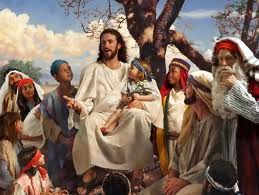
The section of Holy Qurbana, from Trisagion to
dismissal rites, is known as the
Liturgy of the Word.
PUBLIC LIFE OF
ISO’-MSIHA
Liturgy
of the Word in the Qurbana
celebrates the public ministry of Iso’-Msiha. With baptism in Jordan Iso’ began his public life.
During his public life, he moved among the people as one among them,
selecting and calling the disciples, teaching, guiding and correcting
them. All such realities are celebrated
in the Liturgy of the word.
CELEBRATION OF THE
WORD
Mar
Toma Nazranees emphasize more the
celebration and commemoration aspect involved in the Liturgy of the Word than
the content of biblical readings.
Liturgy
of the Word, for them, is the most sublime moment when the liturgical
assembly accepts and confesses the whole of Bible as the source of its faith.
FOUR READINGS
There are four readings in the Qurbana
on Sundays and Feast days: two from OT (of which one from the Law and the other from the Prophets), and two from NT (of which one
form the Apostle and the other from the Gospels). Thus the four readings typify the inclusion
of the whole Bible. Relevant psalms or
hymns or prayers are also added in between the readings in order to make the
celebration more solemn and meaningful.
The OT readings (Qeryane) are read by Qaroya, the Reader and the Epistle or Sliha or Enggarta is read by the M-Samsana
or Deacon.
Evangalion
is always proclaimed by the principal celebrant, usually, from the Bema.
Homily befitting to the occasion is also a speciality of the Liturgy of the Word.
KAROZUTHA PRAYER
“Karozutha
Prayers” which follow the readings and homily is, in fact, a proclamation
of the faith of the concrete liturgical assembly. Its horizontal and vertical reality of
existence is beautifully confessed in the ordinary Karozutha. There is also
provision in it to integrate itself to any special situation.
The Eucharistic gifts are normally
prepared during the Karozutha
prayer. This liturgical action clarifies
how the concrete reality of the worshipping community is incorporated into the
Eucharistic gifts.
DISMISSAL RITES
Dismissal
rites conclude the Liturgy of the
Catechumens. In the early Church,
this part of the Qurbana was
considered also as a preparation of catechumens. Since they could not participate fruitfully
in the rest of the Qurbana
celebration, they were sent home with a special blessing. The dismissal rites are optional today, but
kept up in the text because of their enriching theological insights. Anyone who seriously reflect on those
formulae of dismissal can understand the emphasis on Eucharistic communion in Mar Toma Margam. Communion is
understood to be the culmination of Qurbana
celebration and hence a must.





No comments:
Post a Comment